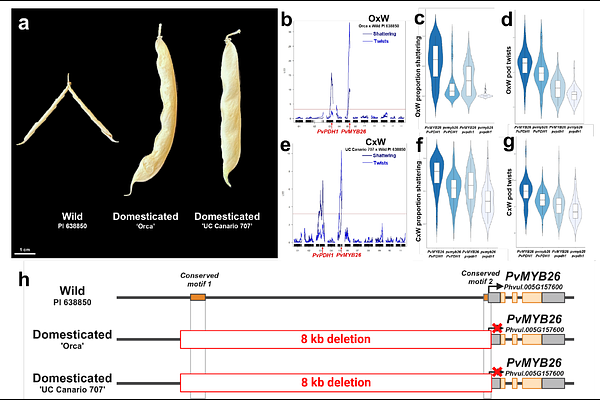A domestication change at PvMYB26 in common bean sheds light on the origins of Middle American agriculture

A domestication change at PvMYB26 in common bean sheds light on the origins of Middle American agriculture
Celebioglu, B.; Roy, J.; Farmer, A.; English, S.; Yu, X.; Xu, X.; McClean, P. E.; Gepts, P.; Parker, T.
AbstractDomestication imposed radically different selection pressures on plants, eventually transforming them into the cultivated forms that support global populations today. Here, we investigate the loss of seed dispersal via pod shattering during common bean (Phaseolus vulgaris L.) domestication. We identified an eight-kb deletion eliminating the transcription start site and promoter of the candidate gene PvMYB26. Mutants express PvMYB26 at < 1% of the level of wild types and produce 44% less pod lignin. Whole-genome sequencing revealed that the mutation is nearly diagnostic for domestication status among Middle American common bean, indicating its importance in domestication. We also identified a high-frequency PvMYB26 frameshift/premature stop mutation unique to Andean domesticates. Wild haplotypes most like Middle American domesticates are found in eastern Jalisco, Mexico. Our results suggest that West-Central Mexico was the site of common bean domestication and suggest that this region may have been important in the rise of Middle American agriculture.